December 15, 2021
From CTG Viewers: How It’s Growing Fall 2021!
Central Texas Gardener viewers are here to help you plan your garden dreams for the New Year! From across the state, and from Arizona and Arkansas, they journaled their garden discoveries this fall and asked us some questions. Once again, Daphne (and cuddlebug Augie) recorded from their living room as we work from home while the new Austin PBS studios and offices complete construction.

First, many gardeners wondered why bearded irises bloomed in November. In Hearne near Bryan-College Station, Robert Gonzalez and his partner John aren’t complaining about this gorgeous surprise. A cold front that dropped many of us into the 40’s or lower earlier this fall, followed by the return of warm and dry weather, is likely the reason for the unseasonable floral show.
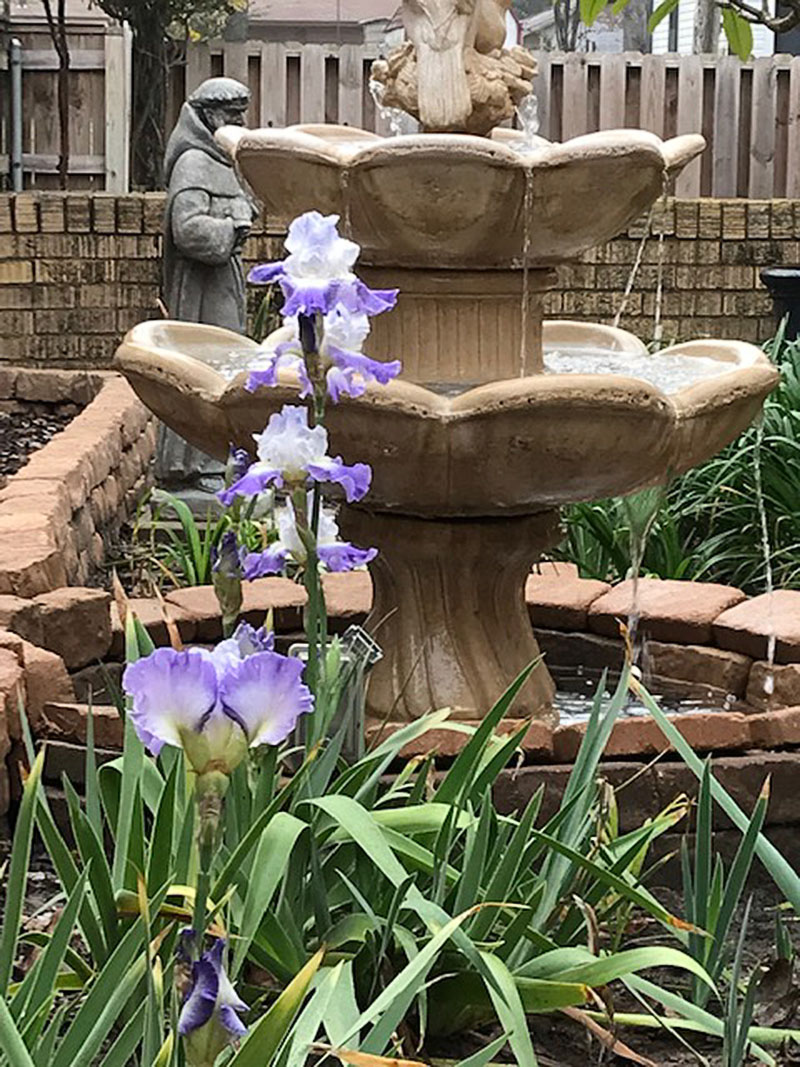
From Tucson, Arizona: Aimee has a great question about houseplants. Can she recycle her coffee grounds in houseplant containers? Although the short answer is yes, in moderation, it would be better to compost them instead. Coffee grounds do add a small amount of plant nutrients and may slightly acidify the soil, but should be added sparingly, if at all. Add those grounds to your compost pile instead, where the microbes will love them!
Reynaldo’s got a mystery with his ‘Desert Museum’ palo verde. This summer a critter was chewing or scraping the bark. He placed a protective barrier in case of deer, but the problem wasn’t resolved. He hasn’t spotted the culprit and wants to know if this is serious and what kind of protection is best.
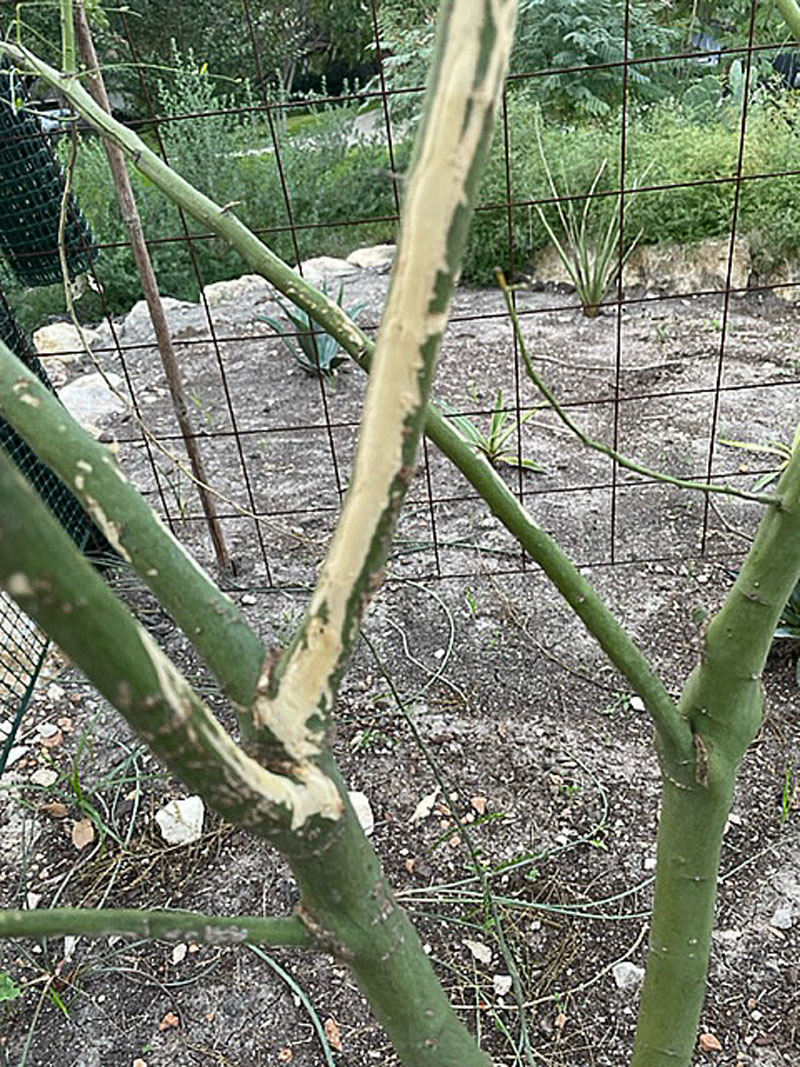
Unfortunately, the bark of young trees like this one is very thin, leaving it vulnerable to even the slightest mechanical damage. When the bark is scraped away like this, the growing region just underneath it may also be damaged, leading to die-back in the branches above. Squirrels, racoons, or basically any climbing animal may have caused this problem, so a netting to encase the entire tree for a few years, until it gets older, and the bark is thicker, might be necessary to give the tree a chance to recover.
Since February’s freeze impacted our wildlife, everybody was especially delighted to welcome butterflies. Gerald and Kathy Basham sent greetings from Plantersville where they counted 12 Monarch caterpillars munching away on their tropical milkweed!
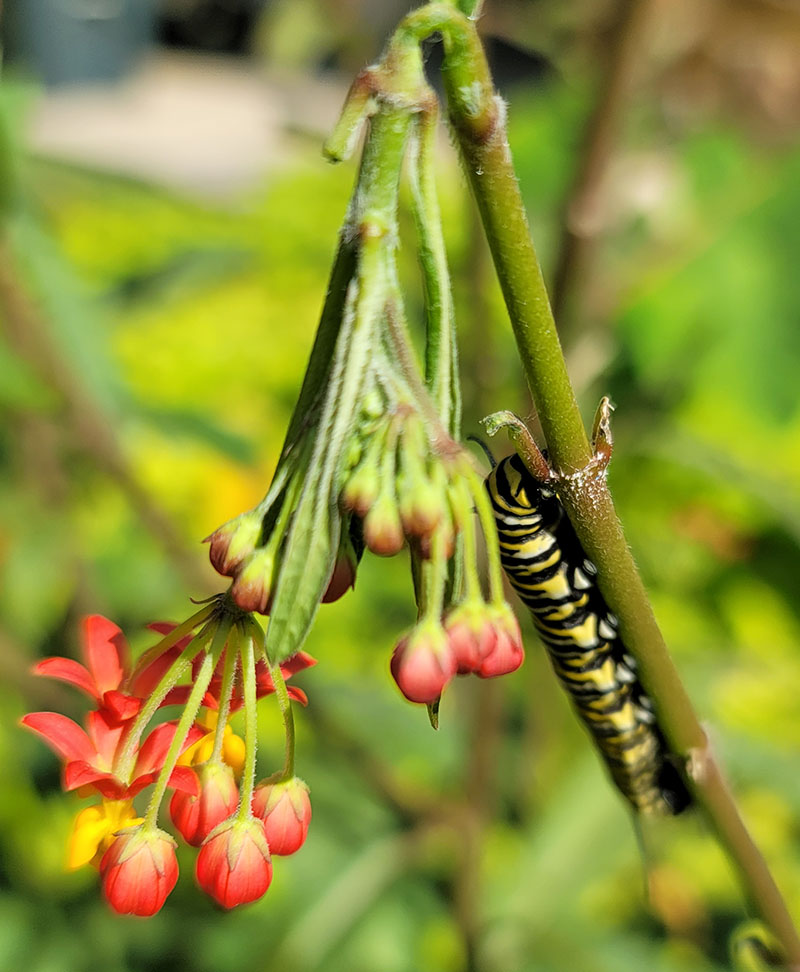
In Buda last September, gardener Ryan Vo snapped this beautiful shot of a Monarch butterfly posing for the camera as dark clouds moved in.
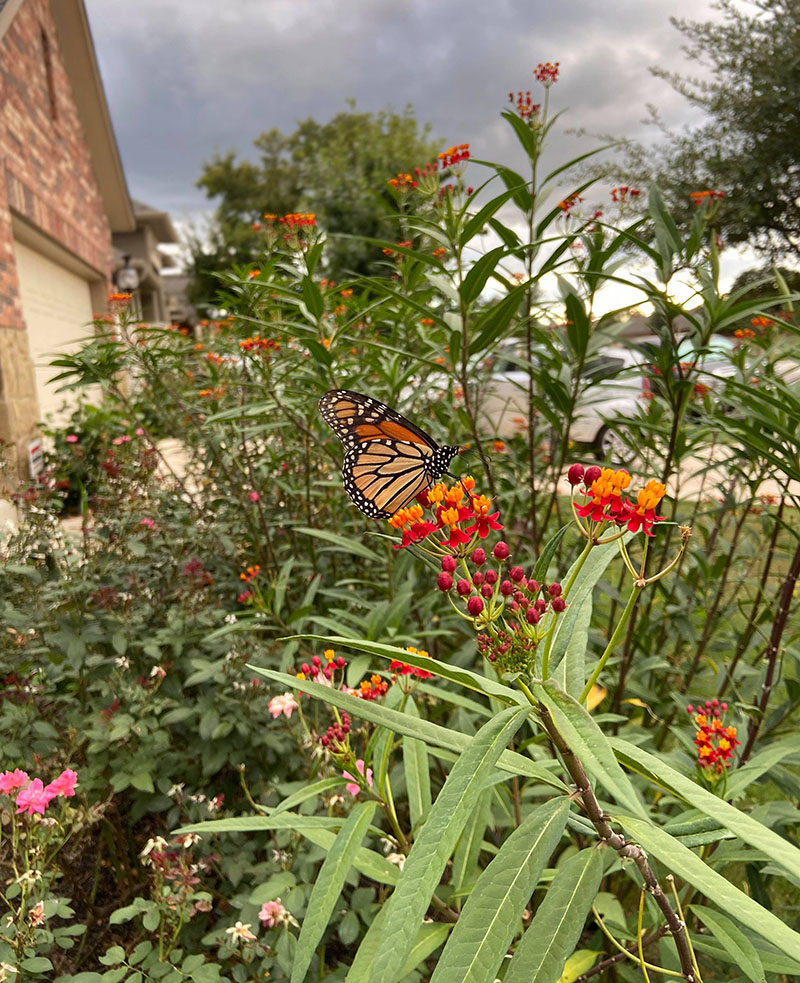
He also asked: when should we cut down tropical milkweed? Last fall, in our pruning segment with Drake White, a native plant garden designer in San Antonio, she recommends cutting it back twice a year: in the first week of June, and again in October through December.
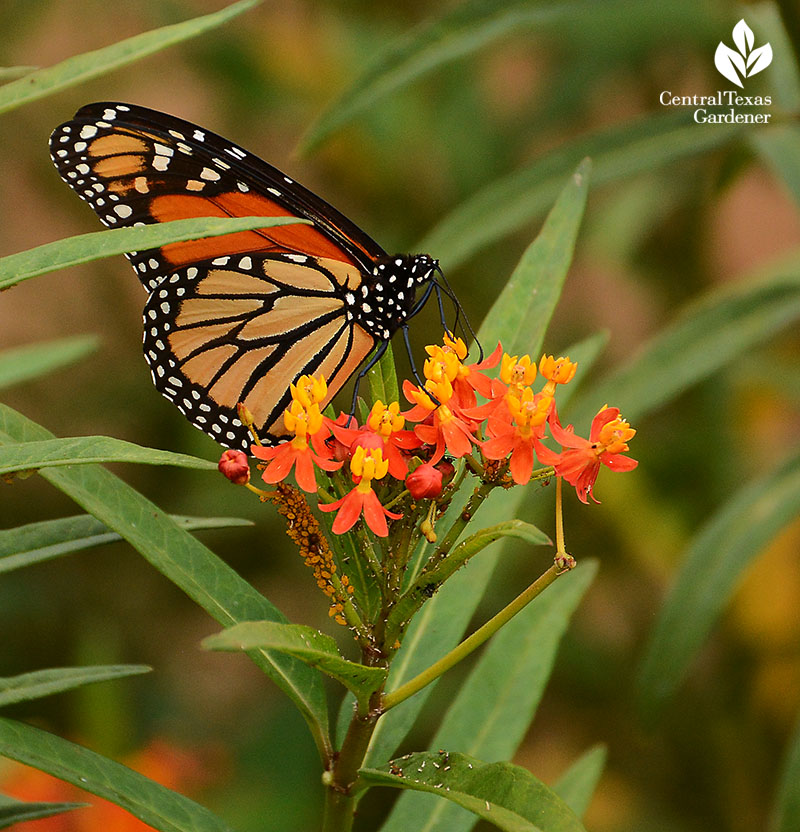
Milkweeds are the larval plant food for Monarch butterflies, but the adults nectar on many different flowers. In Arkansas, Roy Wilson watched Monarchs grab a quick meal on his lantana—perhaps they were on their way over to our gardens?
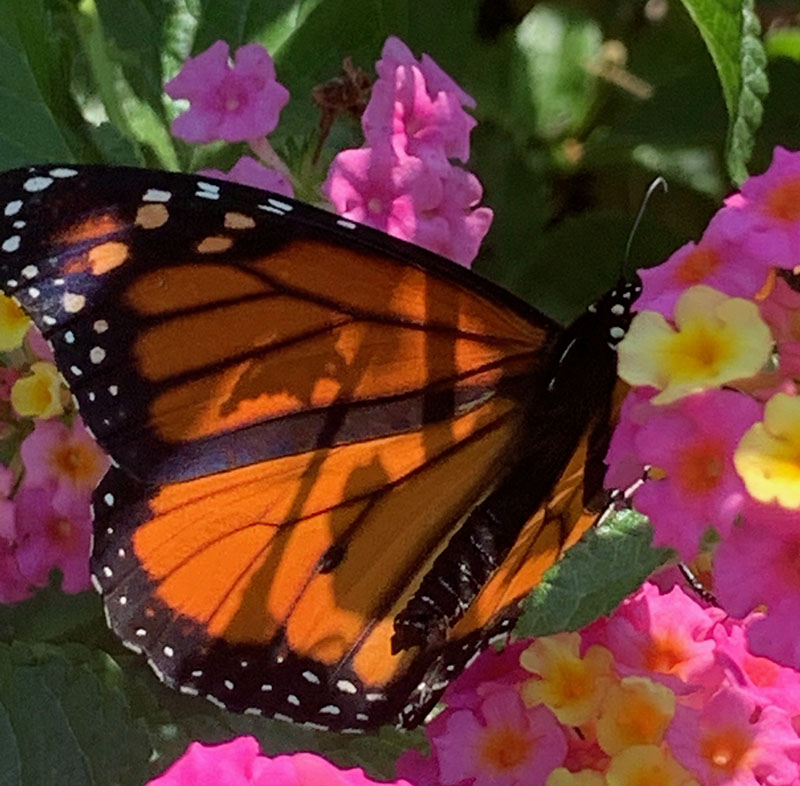
In Lago Vista, Becky Borgstrand raises Monarchs in protective enclosures to observe the cycle of life. Then, she releases them into her butterfly garden, inspired by CTG. Her adorable miniature schnauzer Dusty supervises!
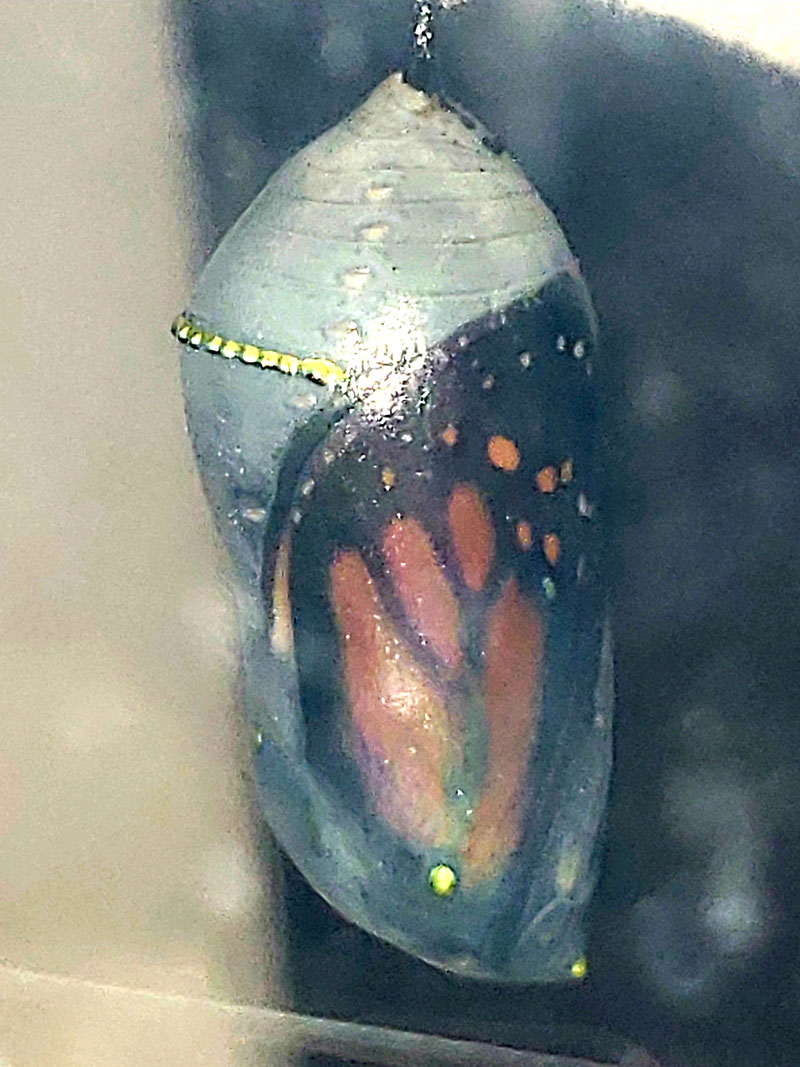
This year, she documented the entire cycle from tiny eggs through pupation, even grabbing video of a Monarch emerging from its chrysalis.
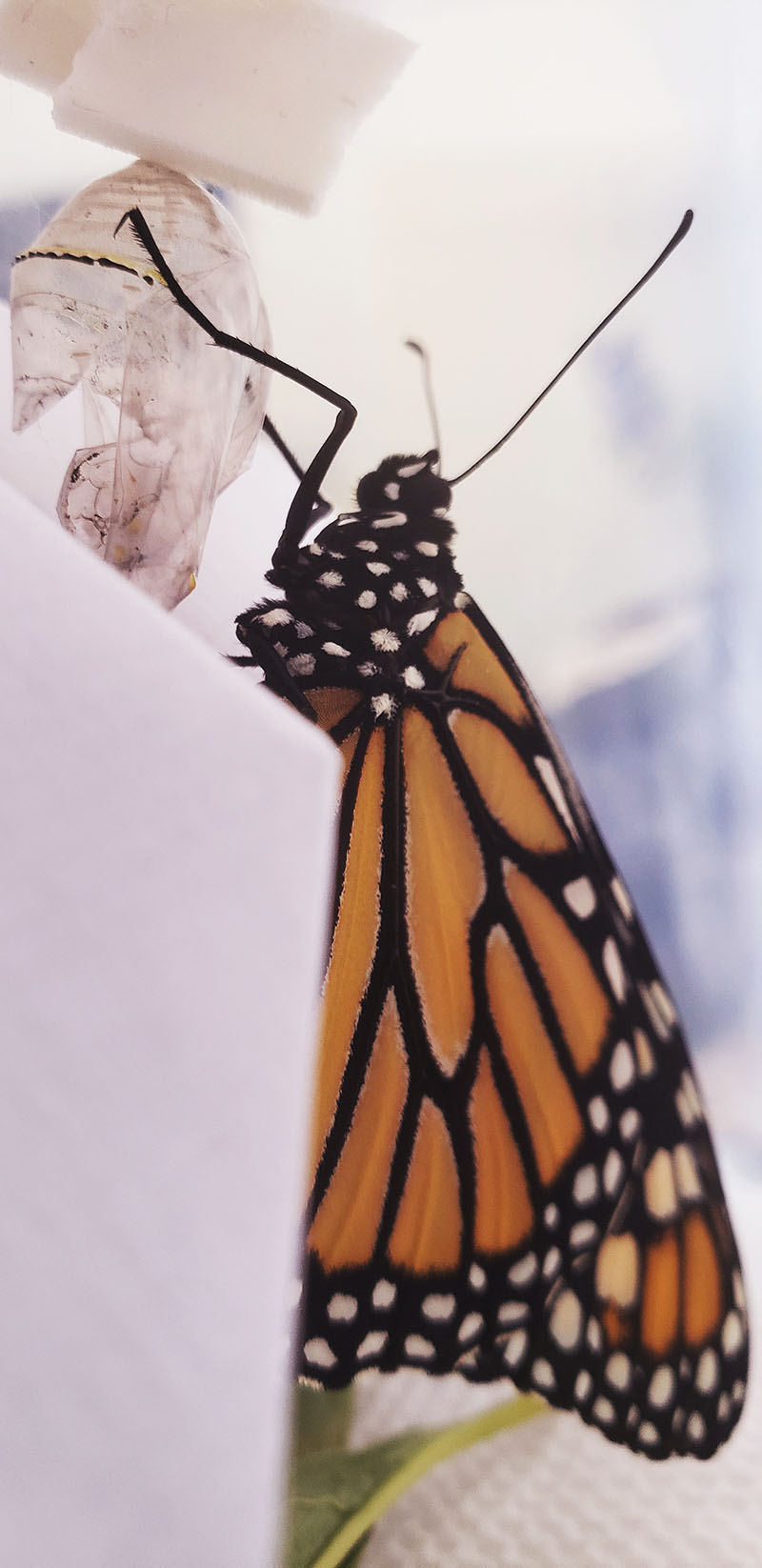
Summertime’s annual zinnias are big hits with many butterflies. Along with Monarchs, Brigitte and Steven Tannen watch graceful Tiger Swallowtails in their garden.
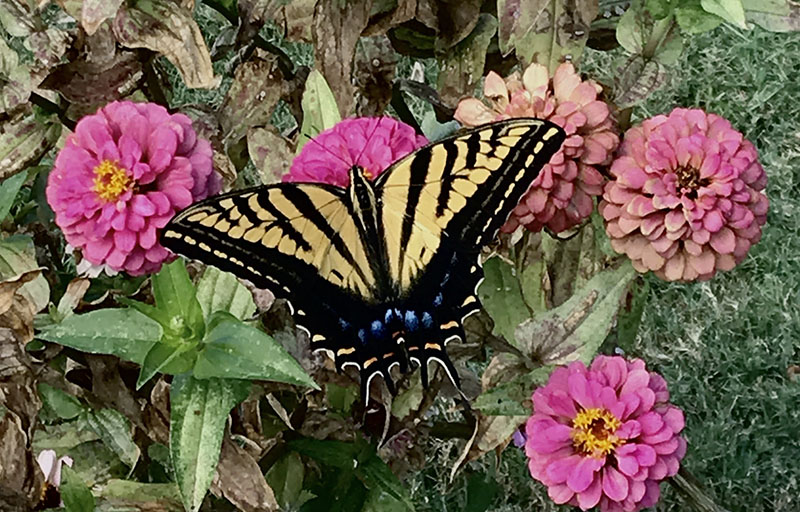
In Cypress, outside Houston, hummingbirds nectar on zinnias in Carol and Ralph Villalpando’s garden.
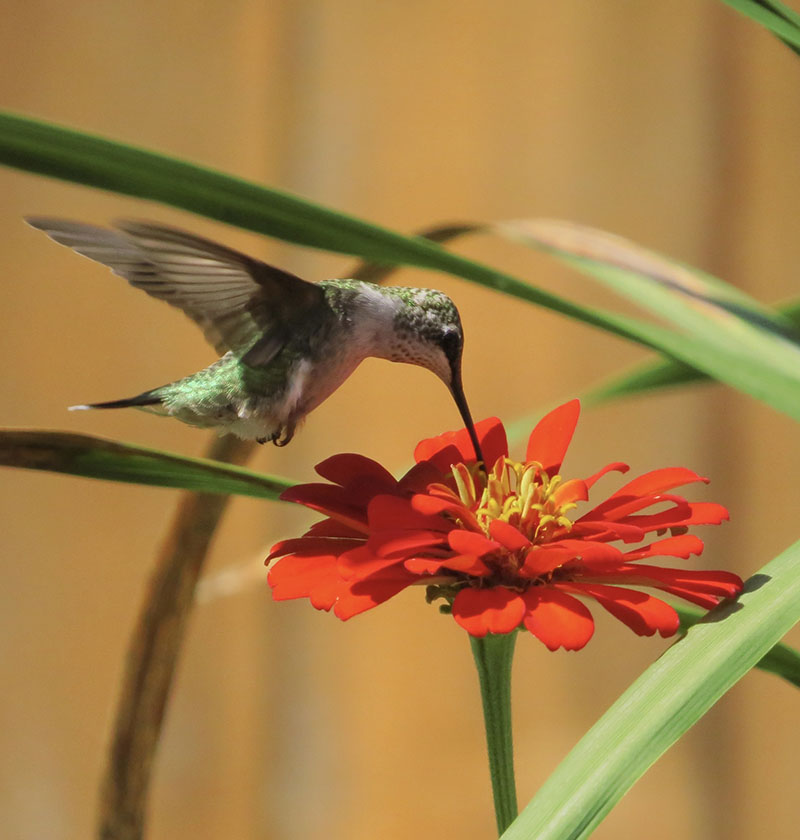
We love what she wrote: “CTG is so informative for us both. I wake up to a cup of coffee and an episode of CTG. As soon as I come to the living room, he hits play. We watch the show and then head out to tend to the plants and garden. It’s so fulfilling to the soul to help grow what God created and enjoy watching God’s creation flourish before our very eyes.”
Artist and gallery exhibitor Gail Dentler shared a few photos of her work in South Central Texas. One of her goals is to document hummingbirds as they migrate through Texas and how our plants help them on their long journey.
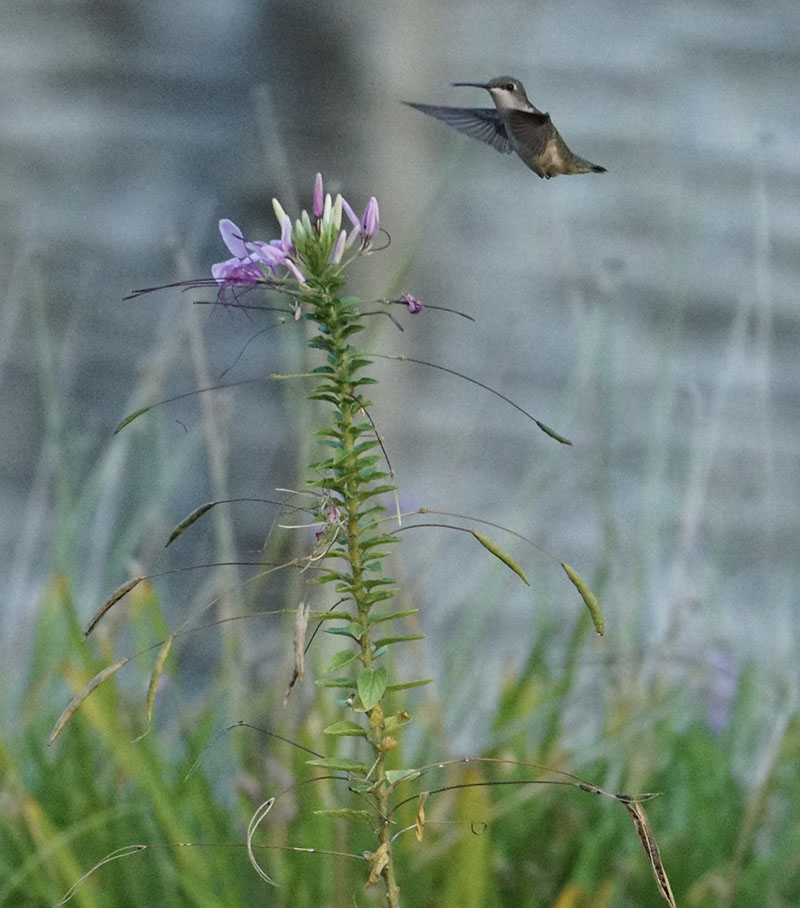
She wrote: “I love your show, and gardening, and thought some of my photos might inspire conservation and stewardship of our beautiful planet!”
In Houston, Shelly McDaniel’s garden is a feast for hummingbirds, bees, and butterflies.
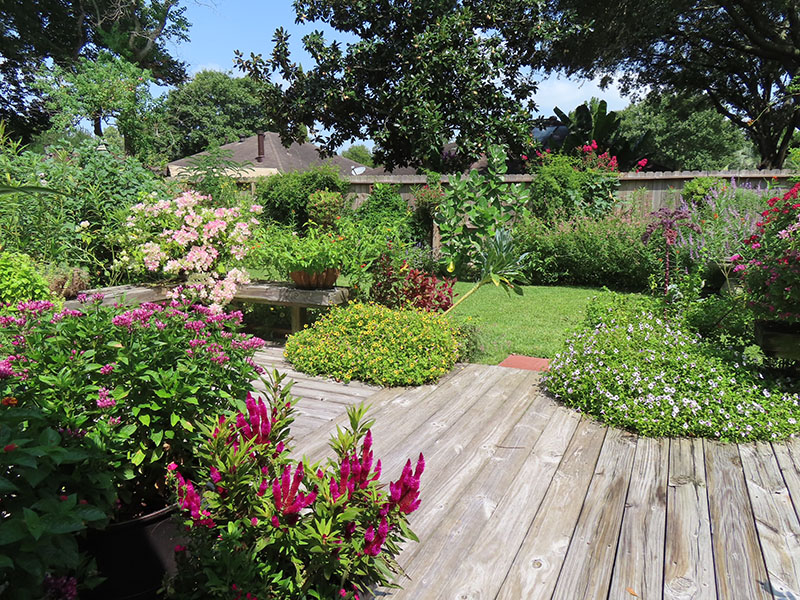
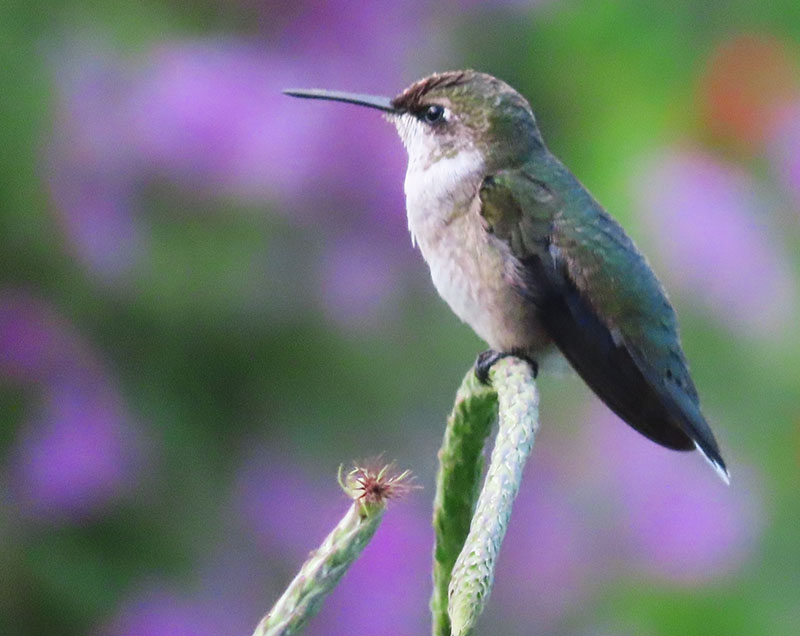
Bill Bauta hosts a popular spot for hummingbirds and butterflies in his xeric San Antonio garden. In full sun, this pocket combines thryallis, tropical sage, verbena, coneflower, and a variegated Yucca. Earlier, he cut back the coneflowers and verbena, but notes that they’ll be back in full force.
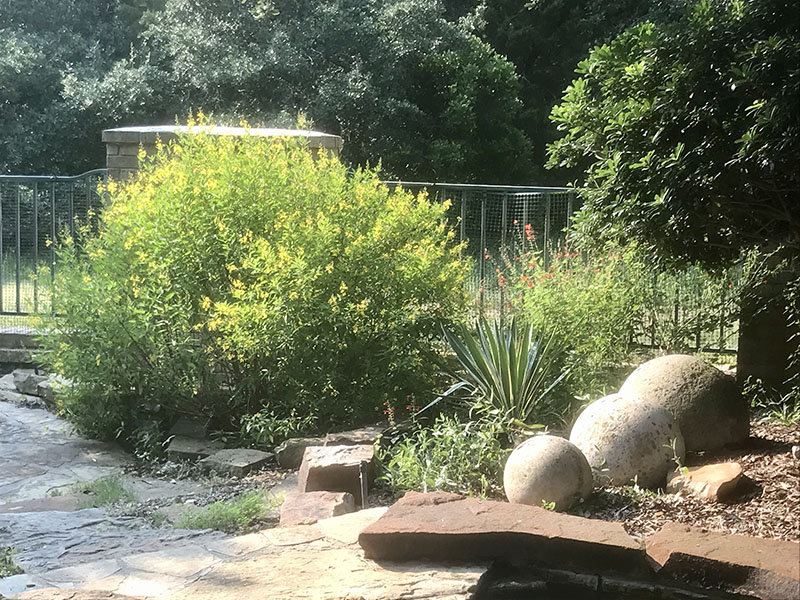
In East Austin, Robert Villarreal enticed many resident and migrating butterflies and hummingbirds to his fall-blooming plants. Golden-hued copper canyon daisy and Mexican mint marigold are companions to crimson and gold chrysanthemums and native tropical sage.
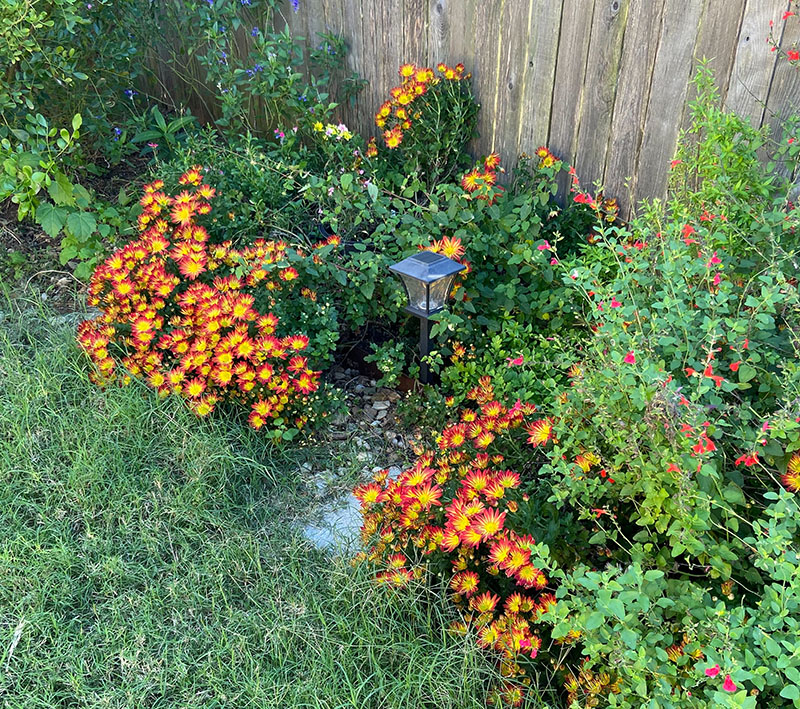
Reed Smith spotted this striking Texas spiny lizard basking in his Dripping Springs garden.
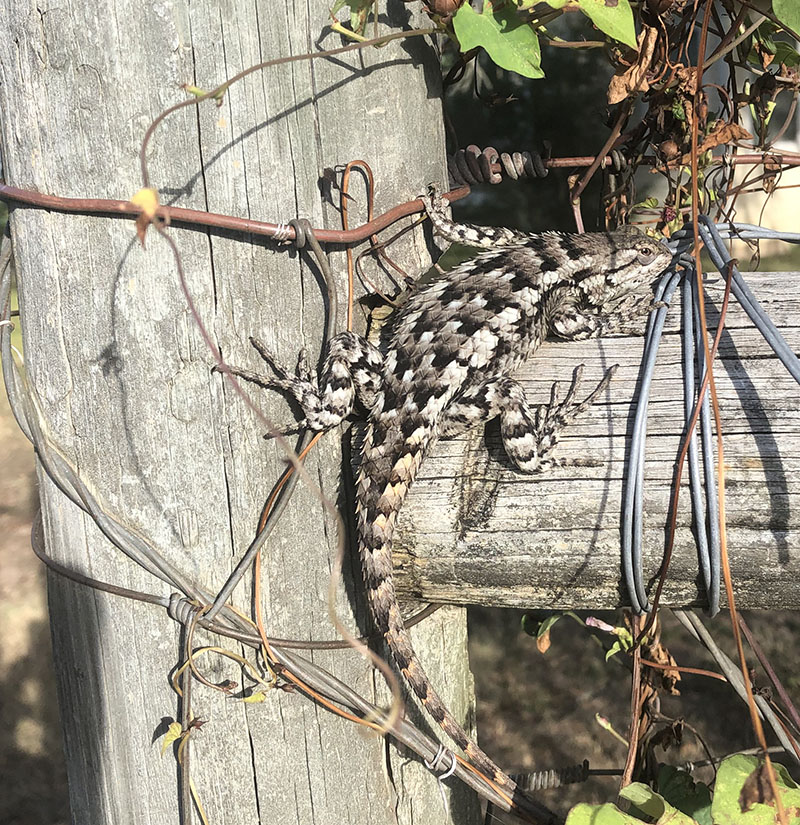
Mark Sepulveda admires the architecture of his Stapelia. The scent? Not so much! Since it’s pollinated by flies, its clever strategy is to smell like rotting meat. Although it’s also called starfish flower cactus, it isn’t a cactus at. But it is a succulent, and is native to South Africa.
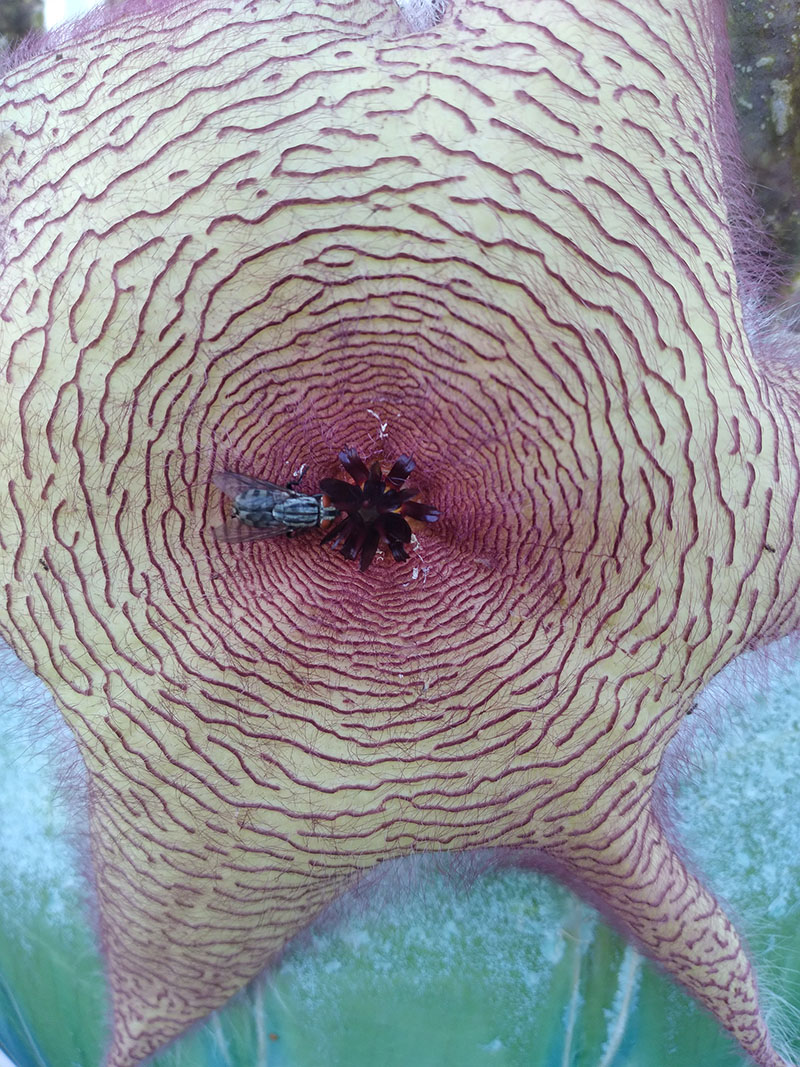
Last spring, Amy Rognlie planted just three morning glory seeds along her fence in Little River-Academy near Temple. Now look at the glorious results! Morning glories provide nectar for bees, butterflies, and moths.
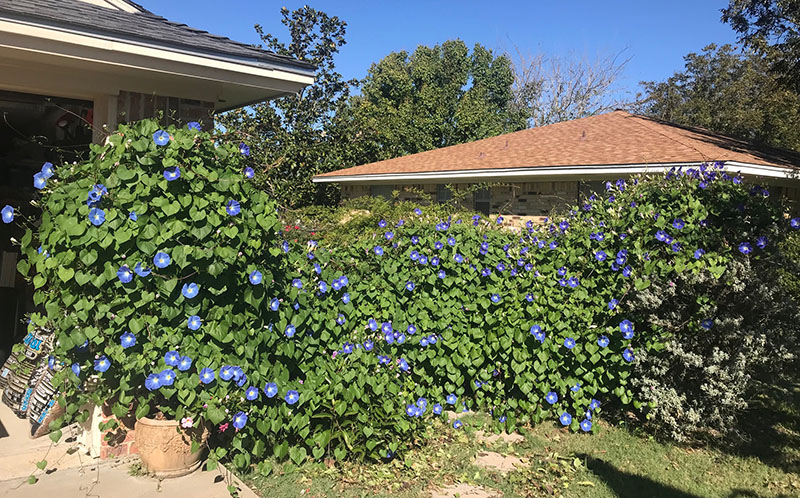
In San Antonio, Karen Wilson added native chile pequins to the habitat list. Growing wild (perhaps spread by birds), she’s made lots of hot chili oil from the chile pequins that flourish in her neighborhood.
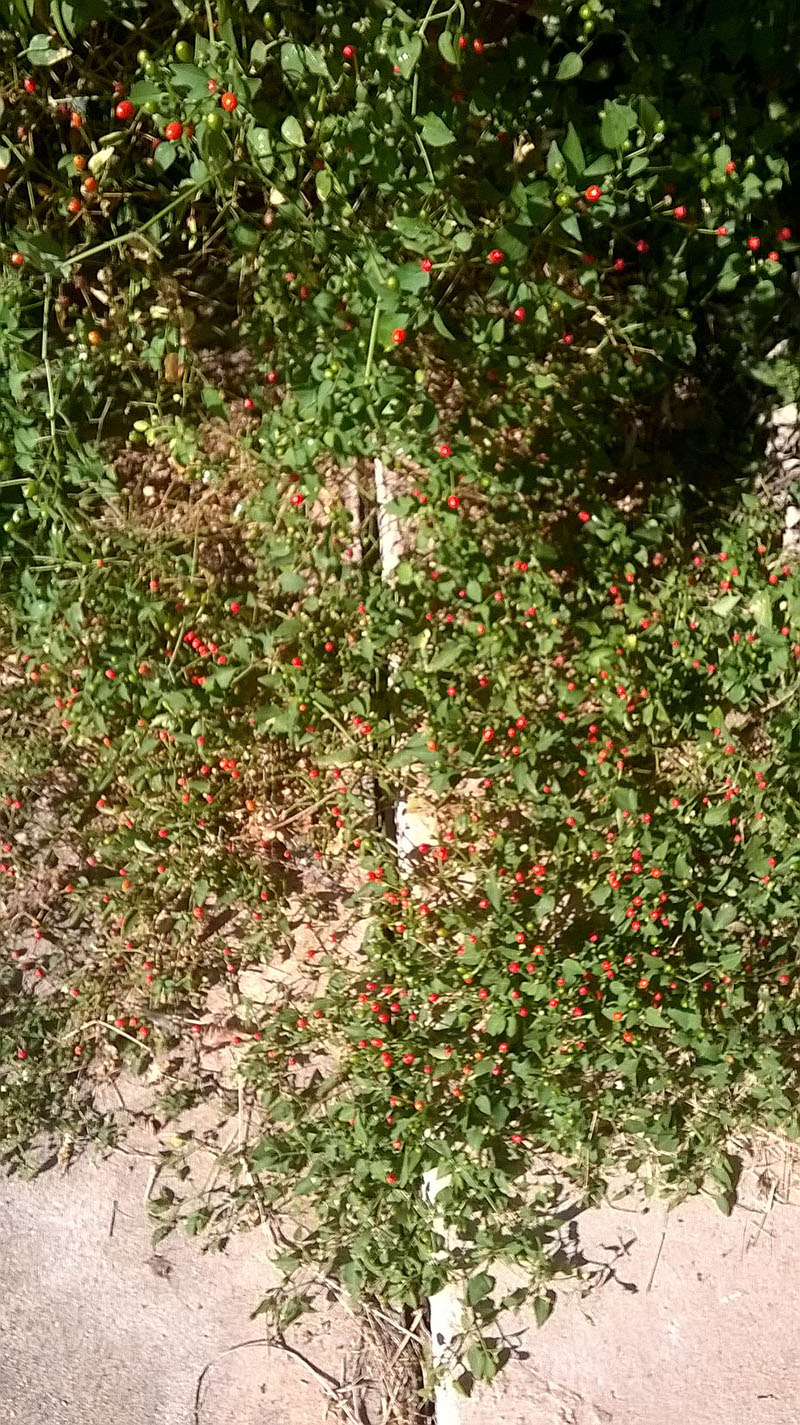
Muhly grasses attract attention all winter. From Fayette County, Agnes Fajkus shared her Gulf muhly.
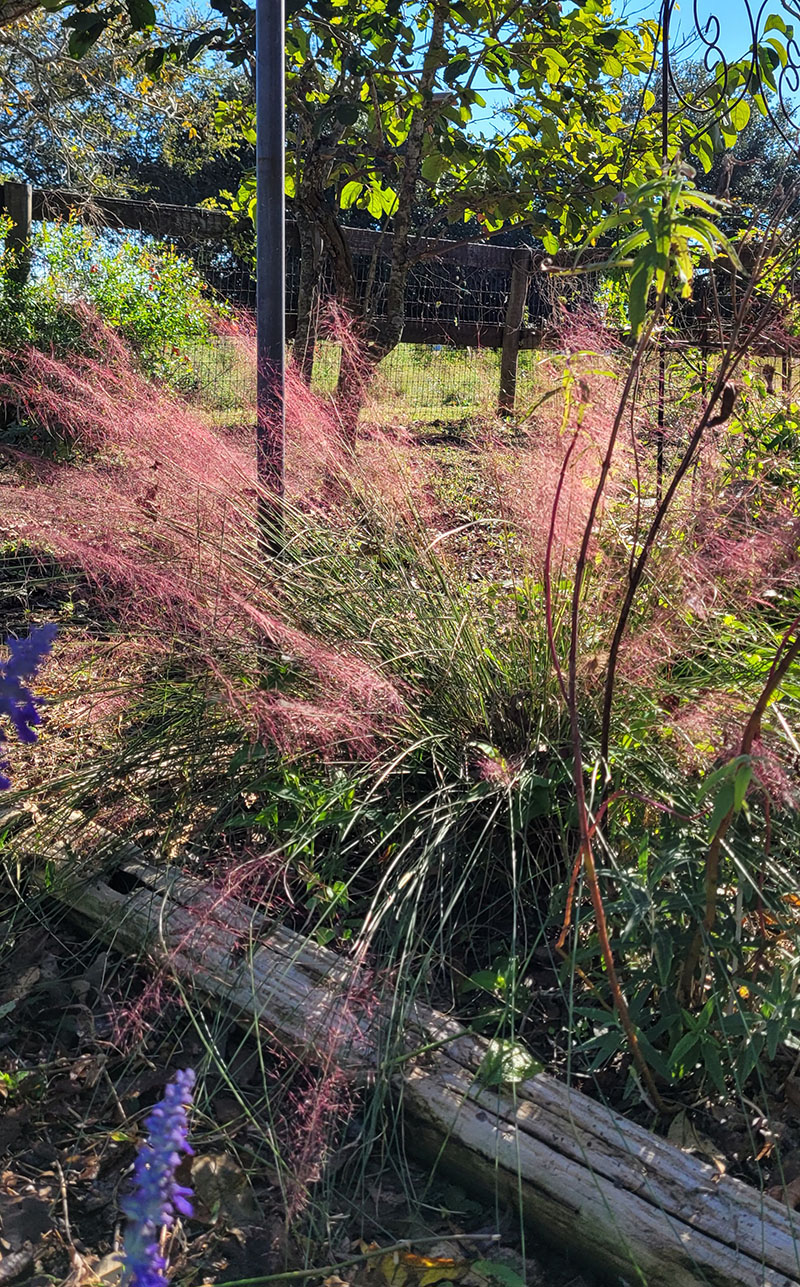
Earlier, David Hamilton sent in this gorgeous photo of his spider lily, Hymenocallis ‘Tropical Giant’. Although these bulbs are cold hardy, wait until next spring, if you want to add them to your part-sun garden.
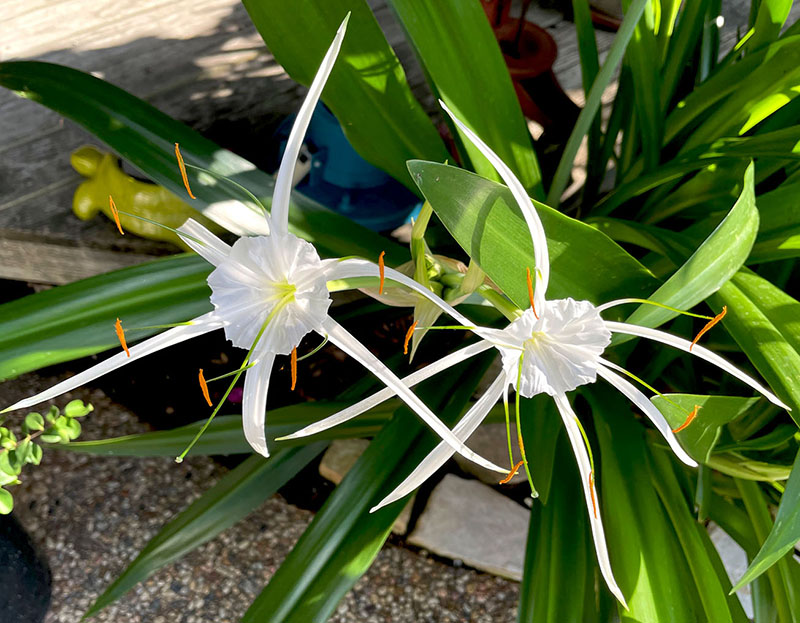
Native annual Eryngium leavenworthii splashed textural purple blooms across Brian Isbell’s garden north of Ft. Worth. We can seed out these summer-to-fall beauties in fall and spring.
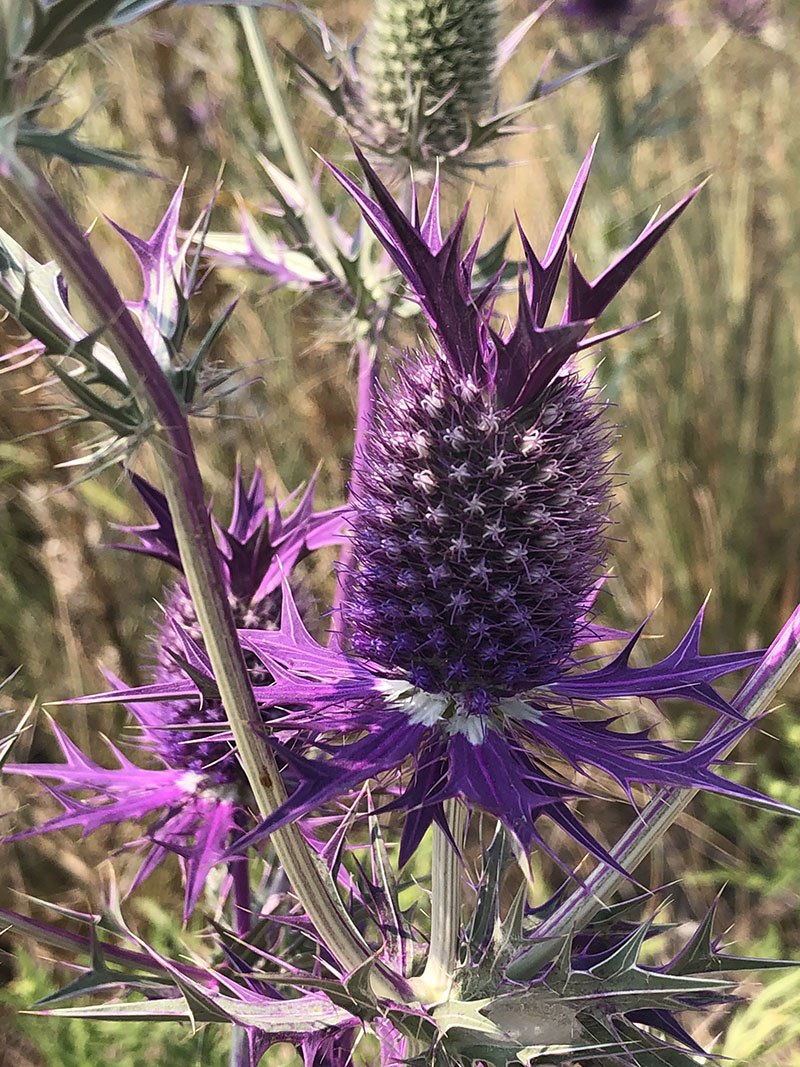
Brian looks forward to the purple to lavender and pink spring flowers on his perennial native spiderwort. Its strappy leaves are popping up now along with wildflower rosettes.
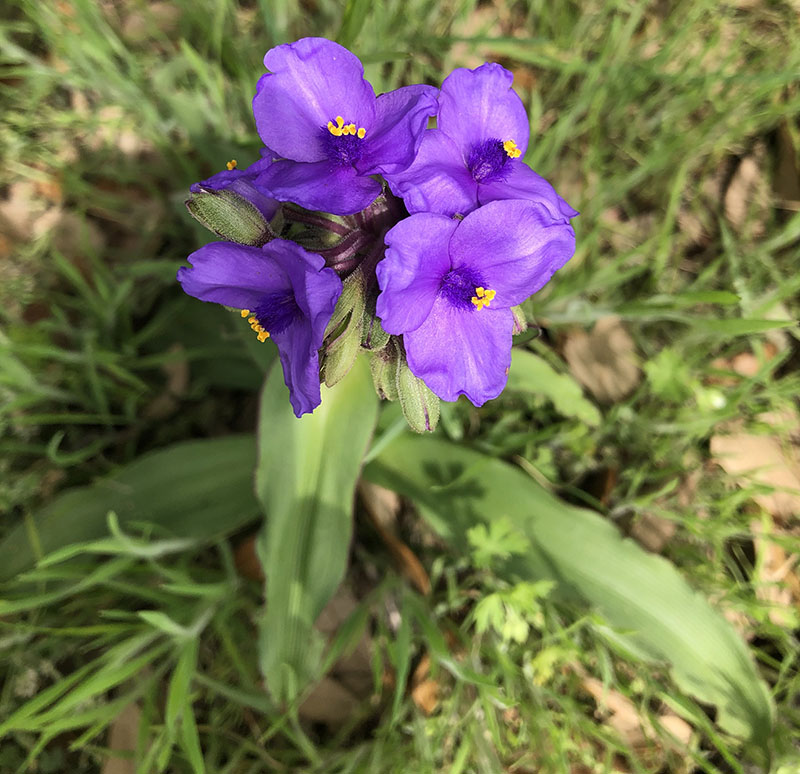
Freckles, Brian’s blue healer/corgi mix, promises to keep an eye on its progress.
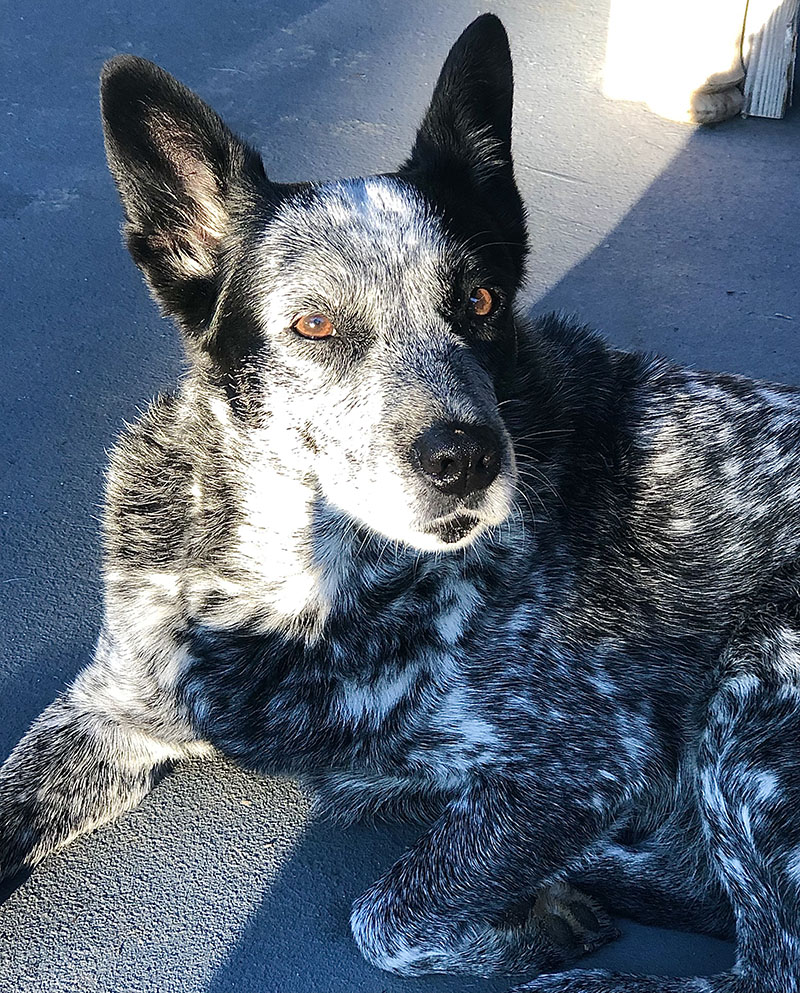
Watch now for their complete stories, pictures, and videos!
And, we’d love to hear from you! Email llehmusvirta@klru.org to send us your questions, stories, pictures and videos (horizontal/landscape format recommended)! Linda
tags:







